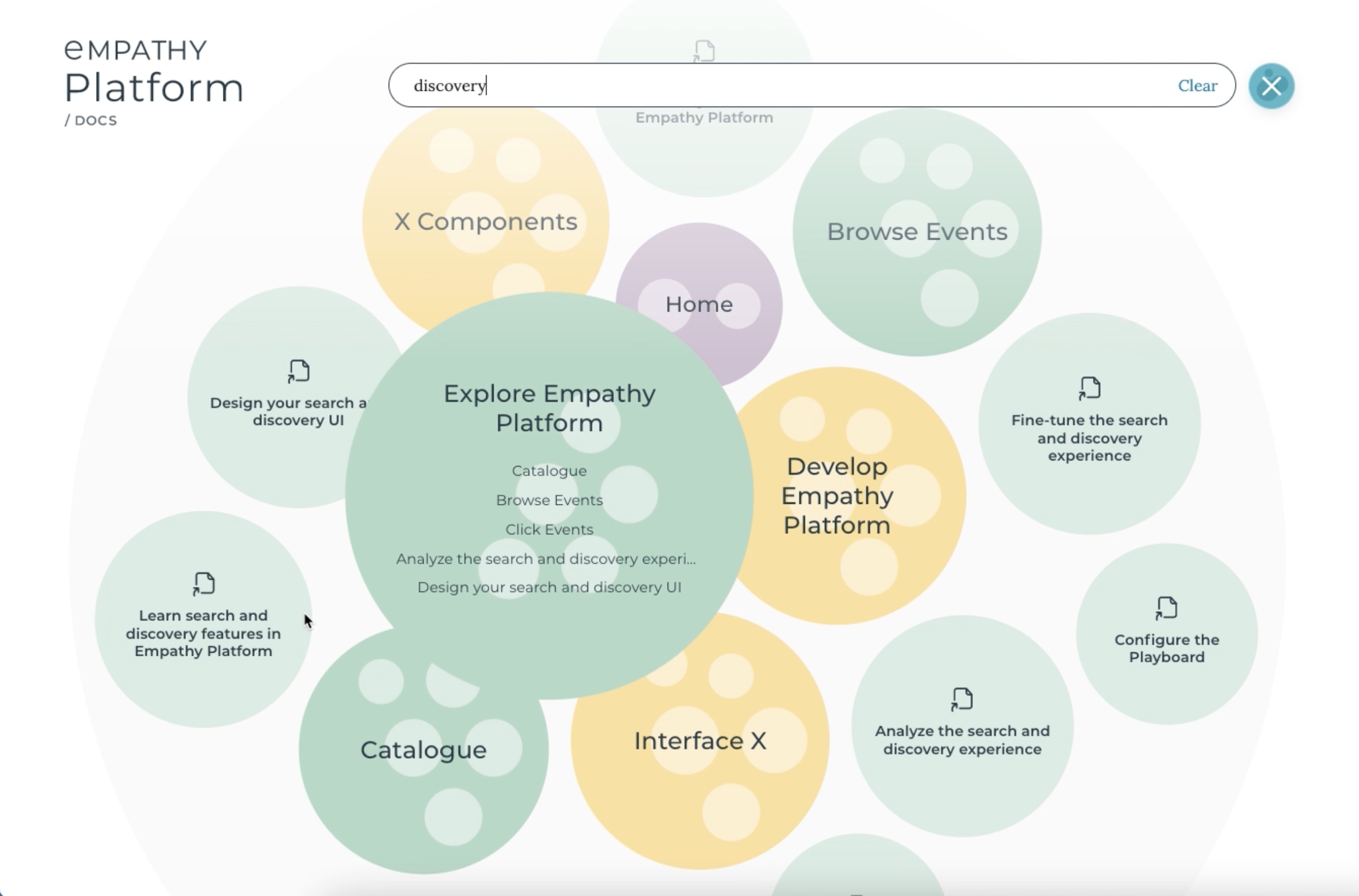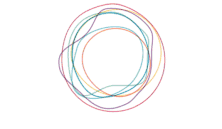Revolutionising content discovery with Holons Search
Revolutionising content discovery with Holons Search
Over the last few months, Empathy’s Open Innovation team decided to take on one of the biggest challenges in search and discovery; attempting to completely rethink how we find and interact with content via search.
The initial goal was to develop a search experience that would enrich Empathy’s technical documentation portal, known as EPDocs, and to design a new way to visually represent the relevance of search results - all while adding an extra layer of intuitiveness to the search experience.
And while Empathy is proud to have been recognized as ‘Best Overall Enterprise Developer Portal’ & ‘Best Design’ at the DevPortal Awards, the goal of this project has never been about winning awards.
Instead, it’s been about trying to push the boundaries of what’s possible with search and how we interact with it.
So here’s how we did it.
Understanding the concept of Holons theory
The journey began with acknowledging the limitations of traditional search approaches. Finding technical resources on the EPDocs platform needed to be more intuitive, efficient, and user-friendly. This challenge led the team to explore the philosophical concept of holons.
First introduced by Arthur Koestler, Holons redefined the perception of hierarchical structures. Koestler coined “holons” to refer to semi-autonomous entities that, while functioning independently, simultaneously form an integral part of a holistic hierarchy - or, a ‘holarchy’.
In other words, Holons are an evolving and self-organising system, where each holon is simultaneously a whole and part of something bigger.

From theory to production
Much like these systems, Empathy’s holons-based content search aims to operate as a self-contained yet interlinked system, enhancing the way we engage with online search. By integrating this theory into our approach, there was a unique opportunity to enhance the search functionality of EPDocs by mixing semantics with user experience.
The team wanted to take this philosophical concept and turn it into a working solution, adding another layer to our content search that enhanced discovery and navigation in ways conventional search couldn’t.
A quick tour of Holons-based content search
Now, it’s time to walk you through a typical Holons-based search experience.
Picture the homepage of EPDocs: a traditional search box lives here, alongside a new button that opens the Holons layer. This additional layer is designed to help users navigate complex technical documentation with greater ease.
Within the Holons layer, different colours represent different topics, while the size indicates relevance. This adds an intuitive visual aspect to search and discovery.
Click on a category and you’re taken deeper into specific search results. Want to go back a step? Simply click on the breadcrumbs or outside the circles. The system is designed to be as user-friendly as possible.
Crafting a seamless backend
Behind the scenes, the backend of Empathy’s Holons search is driven by three main components: A parser that crawls EPDocs pages gathering meta-data, titles, breadcrumbs, and content; an indexer plugin; and a search plugin. These work together to categorise information and return a limited number of relevant results and related categories.
One of our major challenges was adapting our eCommerce product search plugins for content search. It was a complex process, but the team found that taking a creative and innovative approach allowed them to push past these obstacles.
Striking a balance in the frontend design
An intuitive design was critical for the Holons system. The team wanted the visual transition between Holons to be smooth, creating a sense of continuity and immersion in the content.
Striking a balance between size (to denote relevance) and the need to fit text into circles was a complex task. Fine-tuning these aspects was crucial to ensure a consistent user experience.

The next steps for Holons Search
Empathy is continually improving and iterating on the Holons search system, adapting it for different pages and formats. Future plans include refining the solution further and exploring new lines of work, such as 3D and media integration. We also plan to share this innovative solution with our partners and clients, encouraging them to utilise this new approach to content search.
Holons based content search is more than just an innovative approach to search functionality. It’s a testament to Empathy’s unwavering commitment to creating the best possible user experiences, and we’re excited to see where this journey will take us next.









